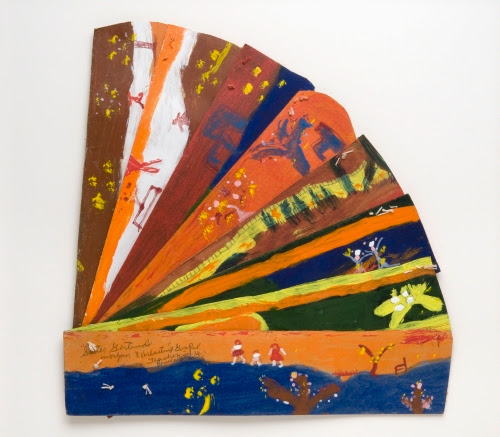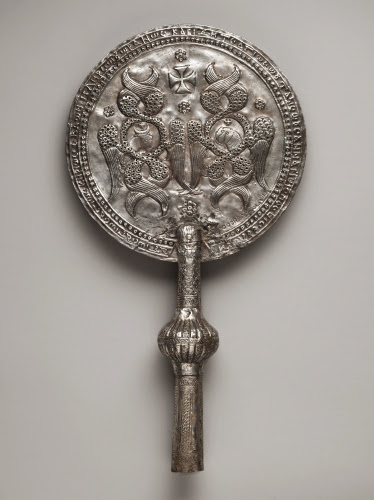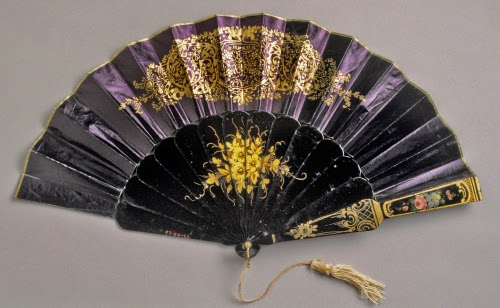Spiritual Color: Sister Gertrude Morgan
The persistence of types of artworks through the centuries always fascinates me. While materials may vary, the artwork still serves the same purpose. Before air conditioning, I’m sure fans were quite popular things to have when in church, whether it be in the American South, or in the heat of the Syrian desert. Although this fan cannot be labeled exactly “liturgical,” a deeply spiritual African American woman who developed many missionary efforts created it.
 |
| Sister Gertrude Morgan (1900–1980, United States), Church Fan, ca. 1970. Gouache and graphite on cardboard, punched, stitched and tied with thread, 13 5/8” x 13 5/8” (34.6 x 34.6 cm). Photo © Philadelphia Museum of Art. (PMA-5100) |
Sister Gertrude Morgan was a self-taught artist. As with many African American self-taught artists, she expressed in her work the large role her faith played in her life, and the life of the African American community. Born in Alabama, she moved to New Orleans in 1937. There she started a street mission, a day care center, established a chapel (her “Prayer Room”), and helped found an orphanage. She began painting seriously in 1956. Her work was religious in nature and often revealed her own visions of God. She worked in a variety of cheap, easily available media.
This painted "prayer" fan by Sister Gertrude Morgan uses the vivid, contrasting range of colors preferred by a number of self-taught artists. Narrative in its subject matter, the crowded compositions of her work often record religious visions or parables from the Bible. They also reveal Morgan’s innate aptitude for harmonizing bright color. She instinctively understood the power of certain strong colors to reflect moods or ideas such as simplicity, hope, or optimism. After 1970 her fans depict almost exclusively scenes from the Book of Revelations.
Sister Morgan’s painted fans were handed out to friends and to people who visited her Prayer Room. The idea of church fans was not new. However, in the early Christian church, some fans were reserved for the clergy participating in a service, such as this Syrian liturgical fan. I can just imagine some poor acolyte stuck with the job of fanning a bishop or priest during a church service. The image is of two seraphs, the six-winged angels that protect the throne of God.
 |
| Syria, Coptic church, Liturgical fan (flabella), late 700s to early 800s CE. Silver, 16 x 8 5/8” (40.8 x 22 cm). © Brooklyn Museum. (BMA-3462) |
And while I’m on the subject of fans, I can’t resist showing you this 1800s beauty from France. It is painted with decoration in the then popular Rococo Revival style. The Rococo period was that of the early to mid-1700s, which stressed arabesque (rocaille in French) decoration and luxurious materials.
 |
| France, Fan with gold rocaille decoration, 1850–1860. Silver foil over paper on painted and gilt wooden sticks. © Philadelphia Museum of Art. (PMA-2435) |
Studio activity: Design a fan in bright colors using symbols that describe your life. Use heavy paper, and after you’ve painted your design cut out the shape of a fan. A fan looks like a triangle except that the top is rounded. Use opaque water-soluble paints such as tempera or gouache.
Correlations to Davis programs: Explorations in Art Grade 3: 6.34, A Community Connection: 6.2, Experience Painting: 2

Comments